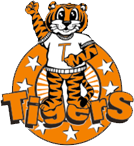The Marysville School District delivered 400 kits to disadvantaged students. So far, kids love them.
MARYSVILLE — Shark Puppet Jr. is on the move.
The monarch butterfly larva is moving to the top of its container to make a cocoon, called a chrysalis.
On the other side of the plastic, 10-year-old Skyler Jefferson watches, writing down observations in a journal.
This is summer school for a group of students in the Marysville School District.
For parents and kids alike, it’s a welcome break from Zoom meetings.
The butterfly-rearing habitat is just one component of a take-home science kit for English Language Learning and underserved students this summer.
The project is a brainchild of teachers at the district who wanted their classes to get hands-on learning despite not being able to meet in person for summer school.
It’s week two of the “butterflies, bugs and blooms” curriculum, and Marysville teachers say photos and videos of students showing off their projects are pouring in.
The kids’ excitement is matched by that of district staff, who think this might be a model for the hybrid online and in-person learning that may be required this fall.
The group of 32 Marysville teachers developed the take-home kits to get kids away from the screen.
“We can’t do anything face to face and our community is tired of the computer,” said Nancy Smith, who directs English Language Learner, Title III and Migrant Programs for the district.
Many of her students also don’t have the computer access needed for strictly online learning.
Kids “need more than what we were able to provide for them during the shutdown,” Smith said. “The way to do that is that they need to use their hands. They need to write, to draw with crayons.”
The kits provide students with everything they need to do that, from dirt for their seed-growing project to pencils and glue for art.
The curriculum is three weeks long, and it’s all about butterflies, bugs and blooms.
Students received their butterfly larvae in the mail last week. As they watch the insect form its cocoon and emerge as an adult butterfly, the students read, color and craft about the life cycle.
Skyler noticed last week his larvae were smaller than his classmates’. He discovered the air conditioning in his house affected their size — larvae in houses without AC, with warmer temperatures, grew larger.
Next, the curriculum will delve into honeybee pollination and the plant life cycle. Kids will also make a cedar mat necklace with direction from Chelsea Craig, a teacher and cultural specialist at Quil Ceda Tulalip Elementary and a member of the Tulalip Tribes.
Activities are packed in week-by-week baggies, painstakingly prepared by teachers and staff at the district office. Directions are in both English and Spanish.
It took teachers and office assistants a day to assemble the 400 kits, and another day to deliver them to students’ homes.
School district staff still aren’t sure what school will look like in the fall. But Smith said the take-home kits are a system they can use again. It’s something that can work both with distance learning and in a hybrid model.
Skyler said he misses his friends from school. But for now, he’s looking forward to meeting his butterflies.
“I really want to see what a monarch butterfly looks like face to face,” the almost-fifth-grader said.
Skyler’s mother, Jamie Jefferson, said the summer science program has given her son some much-needed personal attention from teachers.
“Especially in this time, the kids are really craving that,” she said. “And they’re really thriving on it.”
Julia-Grace Sanders: 425-339-3439; jgsanders@heraldnet.com.

